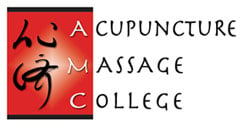Red berry fruits -- such as the elderberry, chokeberry and bilberry -- have been used in folk medicine in Europe and North America for centuries. Hippocrates referred to the elderberry tree as his “medicine chest” while less famous healers have used the fruit as anti-inflammatory, anti-rheumatic, diuretic, and laxative agents, as well as for the treatment of dysentery, stomach ailments, scurvy, and urinary tract problems.
The berries contain a unique and complex chemical composition and are all rich in flavonoids, polyphenols and anthocyanins. The anthocyanins are responsible for the red, purple and blue pigments of the berries and hold the most promising properties for health. Anthocyanins have been shown to be powerful antioxidants with anti-inflammatory, anti-ulcerative, anti-viral, and anti-cancer properties.
These berry extracts can enhance development of nitric oxide and prevent development of superoxide in the body. In recent years, the simple chemical nitric oxide has been shown to play a role in the function of arteries in health and disease. Nitric oxide is produced by cells located on the inner surface of blood vessels and is a potent relaxing agent of arterial muscle. It plays a major role in keeping blood pressure from becoming elevated and in preventing blood vessels from spasming. Nitric oxide also inhibits the development of blood clots and the early processes of atherosclerosis.
In contrast to the beneficial health effects of nitric oxide, superoxide, a reactive chemical known as an oxygen radical, or “oxidant,” generally promotes spasm, blood clot formation and atherosclerosis in arteries. Oxygen radical generation has been shown to be increased in a variety of cardiovascular diseases and also appears to play a detrimental role in cancers, diabetes and inflammatory conditions. Vitamins C and E are known to scavenge or “soak up” superoxide, but evidence that these vitamins can play a preventative or curative role in disease is not proven.
Any factor that promotes the development of arterial nitric oxide and/or suppresses the effects of superoxide and other oxygen radicals in the body has the potential to yield marked cardiovascular benefits to an individual, as well as have positive impacts on many diseases.
Recent investigations into coronary vascular activity produced by extracts prepared from elderberry, chokeberry and bilberry indicate that extracts from chokeberry and bilberry, but not elderberry, produce a direct relaxation of coronary arteries, with chokeberry extract being the most potent. A concentration of chokeberry extract can protect the coronary arteries from oxidant injury, while extracts from bilberry and elderberry can also protect against oxidant injury, to a lesser degree.
These three berry extracts stimulate the development of nitric oxide, which can contribute to maintaining healthy arterial function and can aid in the prevention of heart disease.
For information about Acupuncture & Massage College’s Oriental Medicine and Massage Therapy programs call Joe Calareso, Admissions Director, at (305) 595-9500.

 (305) 595-9500
(305) 595-9500






